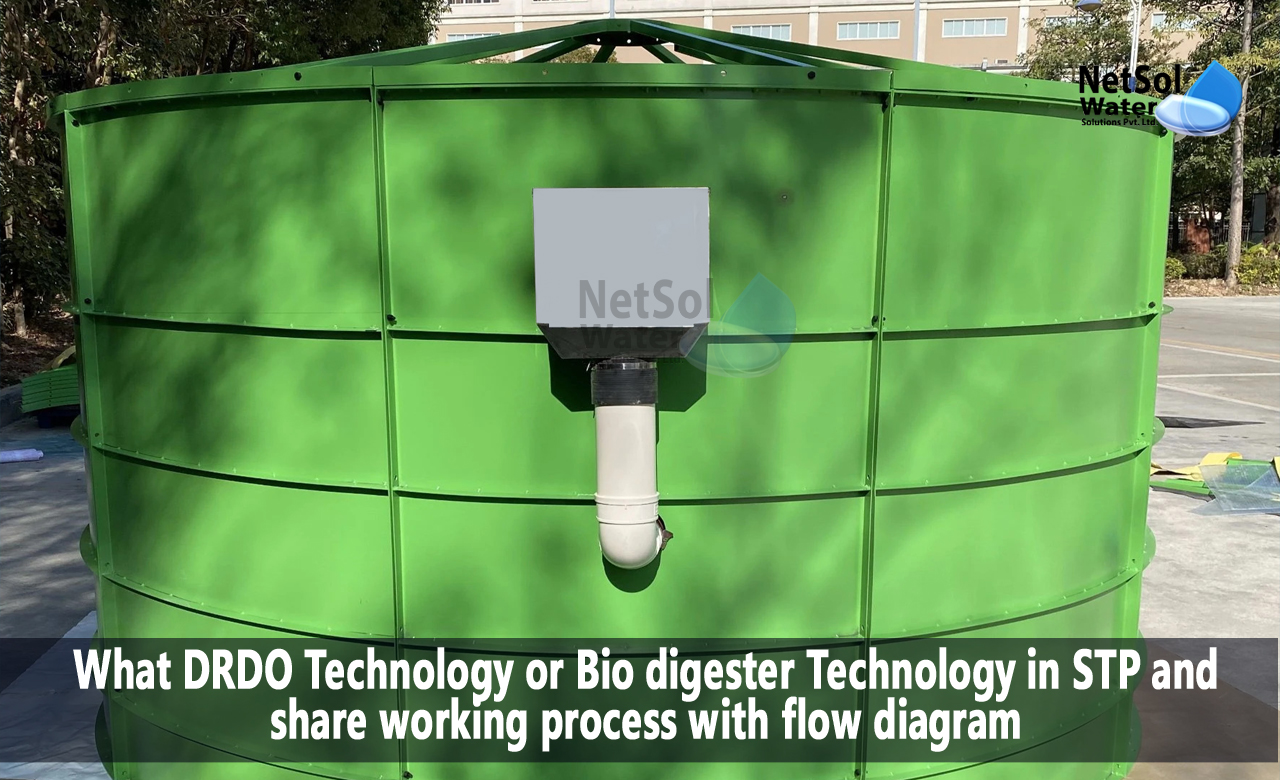What DRDO Technology or Bio digester Technology in STP?
Sewage treatment plants are essential in maintaining the cleanliness and hygiene of our surroundings. The untreated sewage is hazardous to the environment and poses a threat to public health. Therefore, the treatment of sewage is vital to ensure that it is clean and safe for disposal or reuse. The Defense Research and Development Organization (DRDO) has developed a technology known as the Bio-Digester Technology for sewage treatment plants.
In this blog, we will delve deeper into this technology, its process flow diagram, and how it works.
Bio-Digester Technology:
Bio-Digester Technology is an innovative way of treating sewage, which is developed by DRDO. The technology involves the use of anaerobic bacteria to break down the organic matter present in sewage. The bio-digester technology is a cost-effective and eco-friendly solution for sewage treatment. It has gained popularity due to its low maintenance cost and high efficiency.
Process Flow Diagram:
The Bio-Digester Technology in a sewage treatment plant follows a multi-stage process, which includes the following:

- Inlet Chamber: In the first stage of the process, the raw sewage enters the inlet chamber of the treatment plant. This chamber is designed to remove large objects and solid waste such as plastic, paper, and other debris from the sewage.
- Primary Treatment: The sewage then moves into the primary treatment chamber, where the suspended solids and organic matter are separated from the wastewater. The primary treatment chamber uses a process known as sedimentation, which allows the heavier solids to settle at the bottom of the tank.
- Anaerobic Chamber: The partially treated sewage then moves into the anaerobic chamber, where it is subjected to anaerobic digestion. The anaerobic chamber is equipped with bio-digesters that contain anaerobic bacteria. These bacteria feed on the organic matter present in the sewage, which results in the production of biogas and treated water.
- Biogas Generation: The biogas generated during the anaerobic digestion process is collected in a gas holder. The biogas can be used as a source of energy for heating, cooking, or electricity generation.
- Tertiary Treatment: The treated water from the anaerobic chamber moves into the tertiary treatment chamber, where it undergoes further treatment. The tertiary treatment chamber uses a process known as activated sludge, which involves the use of aerobic bacteria to break down any remaining organic matter and pathogens in the water.
- Disinfection: The final stage of the process involves the disinfection of the treated water to remove any remaining pathogens. The treated water can then be discharged into nearby water bodies or reused for non-potable purposes.
Working Process:
The Bio-Digester Technology in a sewage treatment plant involves the use of anaerobic bacteria to break down the organic matter present in the sewage. The anaerobic chamber is equipped with bio-digesters that contain anaerobic bacteria. These bacteria feed on the organic matter present in the sewage, which results in the production of biogas and treated water.
The anaerobic digestion process takes place in the absence of oxygen, which creates an ideal environment for the anaerobic bacteria to thrive. The bacteria feed on the organic matter in the sewage, which results in the production of methane and carbon dioxide. The biogas generated during the anaerobic digestion process is collected in a gas holder and can be used as a source of energy for heating, cooking, or electricity generation.
The treated water from the anaerobic chamber moves into the tertiary treatment chamber, where it undergoes further treatment. The tertiary treatment chamber uses a process known as activated sludge, which involves the use of aerobic bacteria to break down any remaining organic matter and pathogens in the water.
The final stage of the process involves the disinfection of the treated water to remove any remaining pathogens. This is usually achieved through the use of chemicals such as chlorine or ultraviolet (UV) light. Once the treated water is disinfected, it can be discharged into nearby water bodies or reused for non-potable purposes such as irrigation, flushing, or industrial processes.
The Bio-Digester Technology in sewage treatment plants has several advantages over conventional sewage treatment methods. Firstly, it is a cost-effective solution as it requires minimal energy input and has a low maintenance cost. Secondly, it is eco-friendly as it produces biogas, which can be used as a renewable source of energy, and the treated water can be reused for non-potable purposes, reducing the strain on freshwater resources. Thirdly, it is a decentralized solution, meaning it can be implemented in small communities or remote areas where centralized sewage treatment plants are not feasible.
Conclusion:
In conclusion, the Bio-Digester Technology in sewage treatment plants is a revolutionary solution that is cost-effective, eco-friendly, and has a low maintenance cost. It involves the use of anaerobic bacteria to break down organic matter in sewage, producing biogas and treated water. The treated water is disinfected and can be discharged into nearby water bodies or reused for non-potable purposes. This technology is a step towards a more sustainable future and should be implemented widely to improve public health and protect the environment.
You may reach us by phone at +91-9650608473 or by email at enquiry@netsolwater.com if you have any questions about our products, services, or support.



